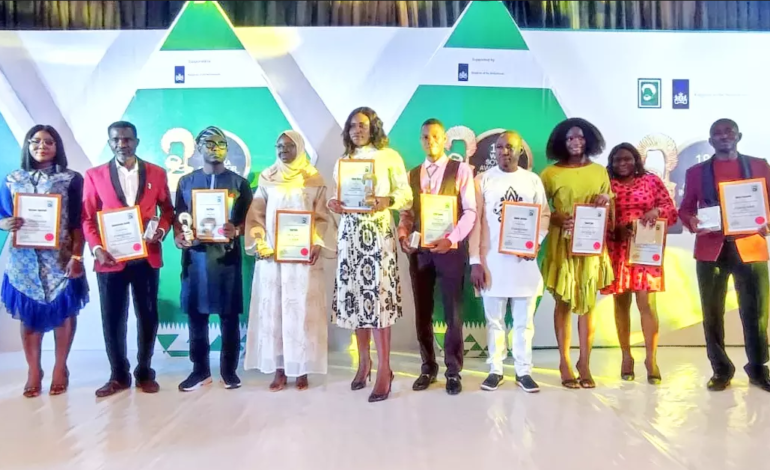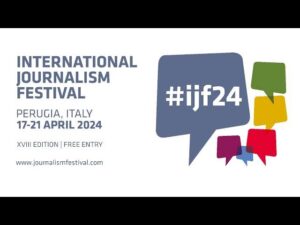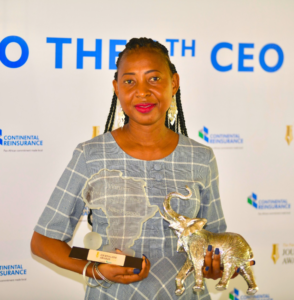The panel of judges of the prestigious Wole Soyinka Award for Investigative Reporting have offered more insights on the requirements for a winning entry for the competition.
The panel consisting of seasoned journalists and media scholars at a recent Question & Answer session explained in more detail what they look out for when selecting winners of each category out of the numerous entries submitted yearly in the award’s close to two decades history.
The panel of judges at the live-streamed Q&A were Professor Umaru Pate, VC Federal University Kashere, Gombe; Professor Abigail Ogwezzy, Department of Mass Communication, University of Lagos; Dr Theophilus Abbah, Program Director, Daily Trust Foundation; Mrs Juliana Francis, Investigative Reporter and first female winner of WSAIR; Mr Deji Badmus, Award-winning Broadcast Journalist; Dr Adeboye Ola, Deputy Provost of The Nigerian Institute of Journalism and Photojournalism trainer; and Mr Mike Asukwo, Award-winning editorial cartoonist. Some of them have been on the board from the onset while some like Mr Mike Asukwo have won his category several times before joining the jury.
The categories for the award include—Print, Online, Broadcast, Photojournalism, and Cartoon.
In this article, our Correspondent, Noah Aderoju writes on the explanations, tips and requirements by these judges to guide entries for the award or other investigative journalism competition.
What an award-winning story should be.
Novel/Unique story or innovative angle: Dr Ola quoted a scholarly definition of Investigative Reporting to be “the reporting through one’s own initiative and work product of matters of importance to readers viewers or listeners. In many cases, the subjects of the reporting wish the matter under scrutiny to remain undisclosed”. He explained the need for entries submitted for the award to be something that is unearthed by the journalist and something that would have been unknown if not for the journalist’s initiative to uncover it. Dr Abbah also stressed the need for novel or unique stories and not imitations.
The judges decried the culture of submitting entries that are imitations of past awardees’, or generic overbeaten subjects, what Dr Ola in Photojournalism parlance calls “Visual Cliche”. While reporting on the same issues is not discouraged, taking the story from another angle that reveals another deal of findings makes it better, they stated.
In-depth research and quality investigation:
According to the judges, a good entry must show a great deal of depth in research and quality in investigation. It mustn’t be just all talks and no game. Professor Ogwezzy expects an entry to put good use of primary and secondary data to work in a report, with great documentation and provision of evidence. Professor Pate also noted that although detailed investigation can be challenging in the broadcast category, due to its equipment-intensive nature, that is what sets an entry in the path of winning an award.
Francis and Badmus, highlighted the need for journalists to draw a clear line between Feature, opinionated reporting and investigative reporting. According to them, the treatment of these kinds of reporting is different and that is what should inform an investigative journalist setting out to do a report.
Investigative effort and Transparency: The efforts put into producing an investigative report is also rewarded in the award selection. Judges stressed the need for journalists to put in and show a great deal of efforts in unearthing the findings and information they present in their reports. According to Dr Abbah there is need for on-the-ground intelligence gathering, verification of information, interviewing of insiders and multiple sources for multiple perspectives, data analysis, and provision of forensic evidence and human evidence in an understandable format for readers. He pointed out that extensive effort in the investigation might require collaboration with other journalists, technologists, newsrooms or even institutions.
Francis noted the need for a journalist to build their capacity in needed areas of journalism, do extensive legwork and enlist the help of mentors whenever needed to be able to produce fantastic works of investigation.
A report must also present all sides of the story and give voices to every party involved in an investigative piece. Methods used to gather information or source data and conduct investigation should also be clearly stated in the report.
Public service and Importance: At the core of journalism is public service and the need for the findings revealed in an investigative report to be relevant to the populace cannot be over-emphasised. This concept, according to the judges also informs the selection of a report for award. Entries that look like it is targeted at a personality or not definitive in who does what, how and with what implication to the people are not worthy of an award. As Dr Abbah puts it in one of his 9-point presentations, investigative work should be definite, with no generalisation, vague group-pointing or unclear insinuations.
Storytelling and Presentation: Storytelling techniques employed and the presentation format used in an investigative report would determine the selection for the award. The judges stressed the need for humanised stories, stories that show in vivid terms how the subject matter plays out in the lives of the sources or people quoted in the report. A good use of multimedia elements for the effective presentation of findings in a story is also a big determinant. Prof Ogwezzy said the use of pictures, infographics, audio and video clips to execute an impeccable multimedia delivery compliments the quality of the reports.
Dr Abbah noted the need for clarity in reports, the roles played by every party involved in an investigation and the impact they have on the people should be clearly stated in the coverage.
What an award-winning report is not.
From the words of the judges, the following are the reasons why many stories don’t win the Wole Soyinka Award for Investigative Reporting in all the categories.
Not a feature or opinionated article: One thing that the panel of judges emphasised the most during the Q&A is the need for journalists to draw a clear line from feature reports and investigative reports. Journalists, according to the judges mix things up between these two forms of journalistic work. Some who set out to do investigative reports end up producing a feature. The Judges described Investigative reports as precise, thoroughly investigated, issue-based, source-intensive and fact and findings-focused reports. Not opinionated or full of expert opinions, or repetitive presentation of publicly known information without novel and definitive findings.
Across, print, broadcast, online and even visual categories, the judges decried having to sort out non-investigative reports submitted as entries for the award.
Not Advisory: Dr Abbah noted that an investigative report is not advisory. It doesn’t tell or define what something is, or what it should be. It should show with adequate evidence how a particular person did a particular thing in a particular method which resulted in a particular result as a consequence affecting a particular set of people.
Not unnecessarily long-form report: Prof Ogwezzy noted that entries for the online category of the award have too many long pieces which could have been told in a shorter more precise form. Stories that can be told in less than a thousand words need not 1500 or 2000 to become better.
Not deskwork. Investigative reports need a great deal of on-the-ground work and legwork. No amount of behind-the-desk work will provide adequate information for an award-winning investigative report. Legwork according to Francis, aside from providing a lot of contextual information will also give a journalist the power of description in his/her storytelling.
Not Opportunistic: An investigative report takes more than opportunistic information or materials to do. As Dr Ola said, investigative journalists must set out to hunt for stories. Regarding photojournalism, opportunistic pictures will not provide enough material for an award-winning piece.





